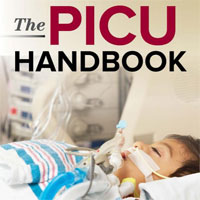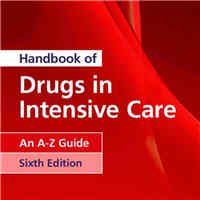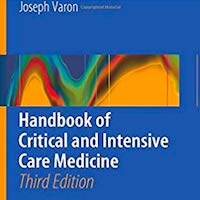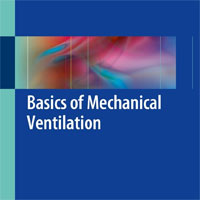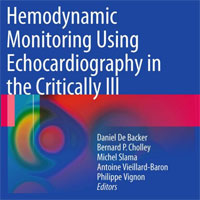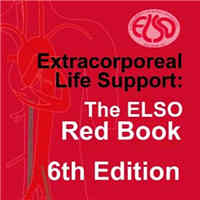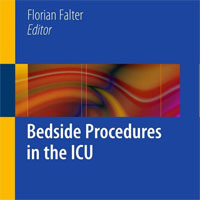Tag: trial
Fever Management with or without a Temperature Control Device After OHCA and Resuscitation
the TEMP‐CARE trial will advance our understanding of post‐cardiac arrest care fever management strategies. With a large sample size and a broad patient population, the results of this trial will inform clinical practice... read more
Early Initiated Noradrenaline vs. Fluid Therapy for Hypotension and Shock
The VASOSHOCK trial is a pragmatic, multi-center, superiority, randomized controlled trial investigating early initiation of peripheral noradrenaline in hypotension and shock, investigating the impact of this treatment on... read more
Standard vs. Double Dosing of Beta-lactam Antibiotics in Critically Ill Sepsis Patients
The BULLSEYE trial is a randomized controlled study designed to enhance the treatment of critically ill patients with septic shock. The concept of administering higher and double doses of beta-lactams in such patients... read more
PCR and Biomarker Algorithms to Guide Antibiotics in Lower Respiratory Tract Infections
Acute chest syndrome (ACS) in sickle cell disease (SCD) is life-threatening and characterised by a new infiltrate on imaging plus fever or respiratory symptoms.1 Causes of ACS include infections, venous or fat embolisms or... read more
Pirfenidone to Prevent Fibrosis in ARDS
Pulmonary fibrosis is a major complication of the Acute Respiratory Distress Syndrome (ARDS). Pirfenidone is an approved treatment for idiopathic pulmonary fibrosis. It may attenuate ARDS-related fibrosis and decrease the... read more
Mortality Time Frame Variability in Septic Shock Clinical Trials
There was considerable variability in the mortality time frames reported in ICU-based septic shock trials. This variability may lead to under or overestimation of the problem, overlooking the effectiveness of the interventions... read more
Machine Learning to Predict Extubation Success Using the SBT
Among the predictive models that used MOT, VCD, and the spontaneous breathing trial (SBT) as input variables through five machine learning techniques, decision trees and artificial neural networks demonstrated the best diagnostic... read more
Multi-dimensional Outcomes Following ECPR
Recent trials suggested that extracorporeal cardio-pulmonary resuscitation (ECPR) with veno-arterial extracorporeal membrane oxygenation (VA-ECMO) or "ECMELLA" (VA-ECMO plus Impella) may improve short-term survival and neurological... read more
Handbook of Intravenous Fluids
This easy to use pocket book covers all aspects of intravenous fluid therapy in critically ill patients from applied physiology to bedside clinical management succinctly. It includes updated and evidence-based content on... read more
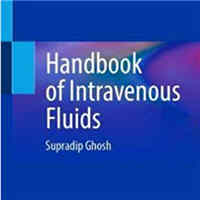
Zosyn vs. Efepime: Which One Is Safer?
While both piperacillin-tazobactam and cefepime are commonly used to treat infections caused by Pseudomonas aeruginosa in hospitalized patients, there is a concern that piperacillin-tazobactam may lead to acute kidney injury... read more
Sodium Bicarbonate In In-Hospital and Out-of-Hospital Cardiac Arrest
Cardiac arrest is a common cause of death worldwide. Sodium bicarbonate (SB) has commonly been used during cardiopulmonary resuscitation (CPR) to correct metabolic acidosis (MA). However, the existence of evidence about its... read more
Health Communication and Adherence to Noninvasive Ventilation in CHRF
This study demonstrated the positive effect of a behavioral strategy based on the IMB model in improving noninvasive ventilation (NIV) adherence in patients with chronic hypercapnic respiratory failure (CHRF). The extended... read more
Anticoagulation Among COVID-19 Patients
In this prospectively designed meta-analysis of randomized trials, administration of therapeutic- compared with prophylactic-dose anticoagulation with heparins to patients hospitalized for COVID-19 was associated with 23%... read more
Single-use vs. Multiple-use Endotracheal Suction Catheters Flushed with Chlorhexidine in Mechanically Ventilated ICU Patients
The aim of this feasibility randomized controlled trial (fRCT) is to assess the practicality and impact of using single-use versus multiple-use endotracheal suction catheters flushed with chlorhexidine on the incidence of... read more
72‐h Infusion of Prostacyclin in Mechanically Ventilated Patients with Pulmonary Infection and Endotheliopathy
Acute respiratory failure (ARF) is common in critically ill patients, and 50% of patients in intensive care units require mechanical ventilation. The COVID‐19 pandemic revealed that COVID‐19 infection induced ARF... read more
Optimizing ICU Weaning: Globalizing Personalized Weaning Strategies
this study provides compelling evidence supporting the concept of individualized weaning in the ICU. By tailoring spontaneous breathing trial (SBT) methods to match specific patient conditions, it represents an essential... read more
Personalizing Beta-blockade in Septic Shock
Clinical trials provide only part of the necessary framework for clinical decision-making. In practice, a detailed understanding of each patient’s hemodynamic profile is essential. We believe that the echocardiography-guided... read more
Intranasal Dexmedetomidine vs. Inhaled Nitrous Oxide for Pediatric Procedural Sedation and Analgesia
The results of this clinical trial support that IN DEX is not inferior to 50% nitrous oxide in providing analgesia for a painful procedure among children 3–15 years of age. Furthermore, IN DEX can be considered as an alternative... read more
Clinical Companion in Nephrology
The second edition of this educational book provides an updated resource on how best to discuss and manage acute and chronic presentations of renal diseases. All chapters have been reviewed and updated to reflect changes... read more
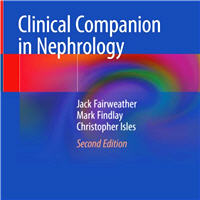
Protocolized Fluid Balance Neutralization During CRRT
Bitker et al. report the GO NEUTRAL randomized clinical trial results, which investigated fluid balance neutralization guided by functional hemodynamic monitoring (FHM) protocol versus a standard of care in critically ill... read more
UFNET Fluid Removal Strategy Secured by Hemodynamic Monitoring vs. Standard of Care in patients with CRRT
An early and active UFNET strategy secured by an advanced hemodynamic protocol using dynamic indices of preload dependence had the capacity to control H72 FB in an ICU population of patients with acute circulatory failure,... read more
ECLS in Cardiogenic Shock Complicating Acute Myocardial Infarction: Benefit and Harm
Cardiogenic shock is a critical condition that affects up to 10% of patients hospitalized with acute myocardial infarction (AMI), representing the primary cause of death in this group. Recently, frequentist analysis showed... read more


